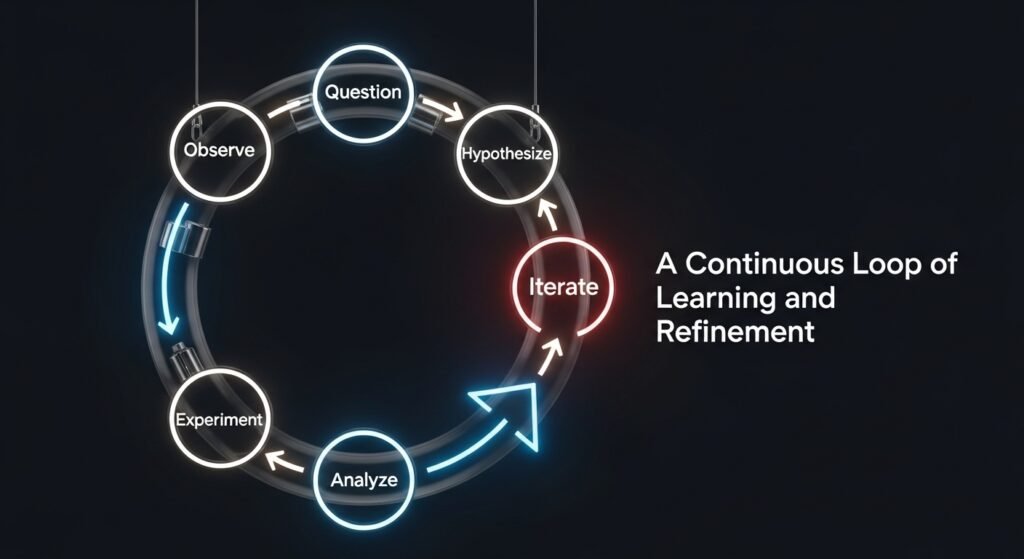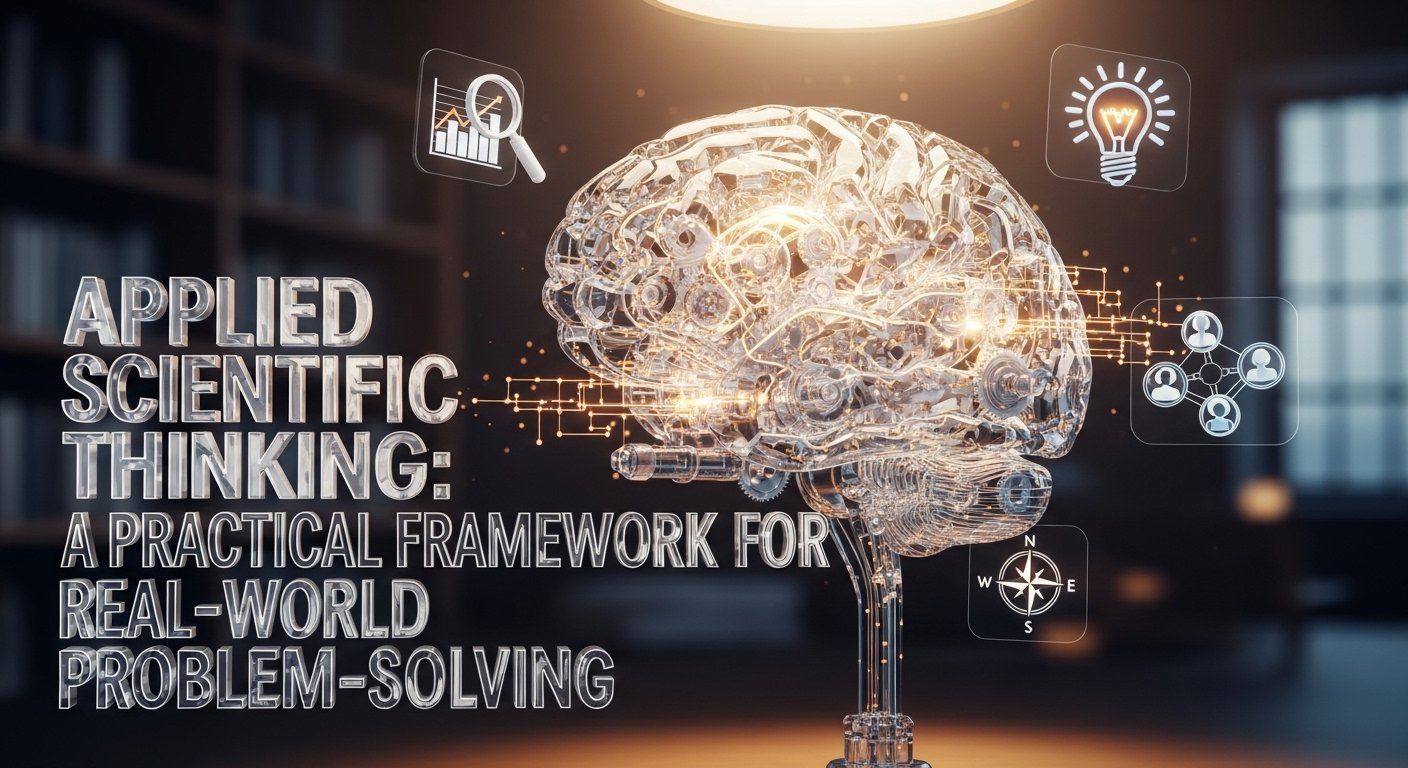When you hear the word “science,” what comes to mind? For many, it’s images of lab coats, test tubes, and complex equations scribbled on whiteboards. But what if I told you that scientific thinking represents something much more powerful and accessible? It’s not just a subject confined to laboratories—it’s a practical framework for addressing real-world challenges through applied scientific thinking.
Applied scientific thinking transforms abstract theories into actionable solutions. Whether you’re a teacher designing a lesson, an entrepreneur refining a business strategy, or a community leader addressing local issues, this approach provides a reliable roadmap for innovation and problem-solving.

What Does “Applied Scientific Thinking” Really Mean?
At its core, applied scientific thinking is about using evidence, experimentation, and critical analysis to make decisions and solve problems. It moves beyond theory and into practice, blending curiosity with methodology.
Consider how doctors diagnose illnesses. They don’t guess; they observe symptoms, form hypotheses, run tests, and analyze results before determining a treatment plan. That’s applied scientific thinking in action.
In education, teachers use this approach when they assess student needs, experiment with teaching methods, and refine their approach based on what works. In business, leaders rely on scientific methodology to test marketing strategies, improve products, and enter new markets.
This approach isn’t limited to experts. It’s a mindset anyone can adopt to navigate complexity with clarity and confidence.
Career Development Courses That Really Lead to Job Offers in 2025
Why This Approach Matters Today
We’re surrounded by challenges that demand thoughtful, evidence-based solutions. Climate change, public health crises, and economic uncertainty all require responses grounded in applied scientific thinking.
During the COVID-19 pandemic, for example, researchers used this method to develop vaccines in record time. They built on existing knowledge, tested hypotheses through clinical trials, and adjusted their strategies based on real-world data.
In everyday life, this thinking helps us cut through misinformation. Instead of relying on assumptions or viral social media posts, we can evaluate claims, seek reliable sources, and make informed decisions.

Core Principles of Scientific Problem-Solving
How can you incorporate applied scientific thinking into your work or daily routine? These principles can guide you:
- Ask Questions and Define Problems
Start by clarifying the problem. Ask: What do I need to solve? What do I already know? What information is missing? - Gather and Evaluate Evidence
Collect data from trustworthy sources. Avoid cherry-picking information that supports preconceived ideas. Let the evidence guide you. - Develop and Test Hypotheses
Formulate educated guesses about possible solutions. Then, design small-scale tests to see what works. - Analyze Results and Iterate
Learn from the outcomes. If something doesn’t work, refine your approach and try again. - Share and Collaborate
Great ideas often emerge through collaboration. Seek feedback and incorporate diverse perspectives.
Real-World Applications and Examples
Applied scientific thinking isn’t just a theoretical concept—it’s being used to address some of the world’s most pressing issues.
- Healthcare: Medical professionals use evidence-based approaches to diagnose diseases, develop treatment plans, and improve patient outcomes according to the World Health Organization.
- Education: Teachers apply scientific methodology to create engaging, effective lessons tailored to students’ needs.
- Environmental Conservation: Researchers rely on this thinking to study ecosystems, develop sustainable practices, and combat climate change.
- Business: Companies use data-driven approaches to innovate, optimize operations, and connect with customers.
15 Free Online Certification Courses to Boost Your Career in 2025
How to Cultivate This Mindset
Adopting applied scientific thinking doesn’t require a degree in science. It’s about cultivating habits of mind:
- Stay Curious: Ask questions and explore new ideas
- Embrace Uncertainty: It’s okay not to have all the answers
- Value Evidence: Let data, not opinions, drive your decisions
- Learn from Failure: Every mistake is an opportunity to grow

Conclusion: Embrace the Power of Scientific Problem-Solving
Applied scientific thinking is more than a tool—it’s a transformative approach to understanding and improving the world. By embracing curiosity, evidence, and collaboration, we can tackle complex problems and create meaningful change.
So, the next time you face a challenge, pause and ask yourself: How can this thinking guide me toward a solution?
For more insights on practical problem-solving approaches, check out our guide to critical thinking strategies.




Pingback: AI in Education: Revolutionizing the Classroom Experience - PaidScripts -Tech Education Hub: Courses & Student Resources
Pingback: AI Technology in Modern Classrooms 2025 - PaidScripts -Tech Education Hub: Courses & Student Resources